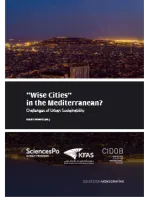The Aftermath of a Masterplan for Kuwait: An Exploration of the Forces that Shape Kuwait City

Throughout history, cities have developed incrementally and grown at a steady pace that revolved around particular social, economic and political constructs, and spatially developed to reflect their community’s building knowledge, availability of materials and particular locality. Some had walls to protect them from outside invaders, and rulers to guide their populations. The city wall had a defence and security purpose, and as a physical element it also defined the city boundaries and confined building and development within its limits. Kuwait Town, preoil discovery, had similar characteristics to those described here. With the first tribal settlements in this coastal town dating back to the eighteenth century, trade, fishing and pearl diving were eventually established as economic means to sustain life. Families started growing, a ruler was appointed and a wall was built in 1760 (Kuwait Municipality, 1980:14). Mud-brick buildings replaced the tribes’ tents, and with that the physical characteristics of the town appeared with a coastal front, a commercial area, and residential homes.